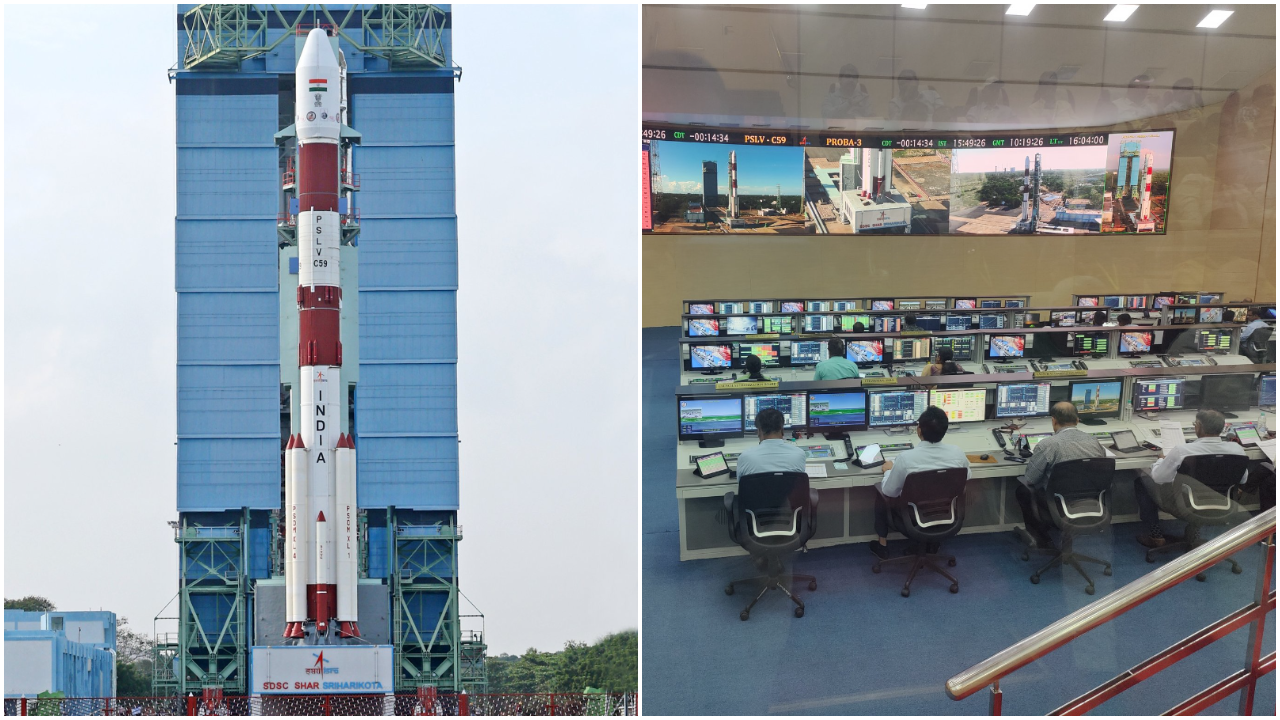‘Liftoff Achieved’: ISRO Launches European Space Agency’s PROBA-3 Mission From Sriharikota

ISRO Launches European Space Agency’s PROBA-3 Mission From Sriharikota (Photo: X/@isro)
Bengaluru: The Indian Space Research Organisation (ISRO) on Thursday launched the European Space Agency‘s Proba-3 mission from the spaceport in Andhra Pradesh‘s Sriharokota. On Wednesday, the launch was rescheduled following an anomaly detected in the satellite propulsion system. The Indian space agency called it a “proud momemt” for India.
“Liftoff Achieved! PSLV-C59 has successfully soared into the skies, marking the commencement of a global mission led by NSIL, with ISRO’s technical expertise, to deploy ESA’s groundbreaking PROBA-3 satellites. A proud moment celebrating the synergy of international collaboration and India’s space achievements!” ISRO Tweeted.
ISRO’s Tweet:
Notably, NewSpace India Ltd, (NSIL), the commercial arm of ISRO has bagged the order from the ESA.
The Proba-3 (Project for Onboard Anatomy) consists of two satellites — Coronagraph (310kgs) and Occulter (240kgs) — in which two spacecraft would fly together as one, maintaining precise formation down to a single millimetre to study the Corona, the Sun’s outer atmosphere.
About The Mission:
The ESA said the Corona is much hotter than the Sun itself and it is where space weather originates. It is also a topic of widespread scientific and practical interest, reported PTI.
For ISRO, besides providing its trusted workhorse PSLV vehicle for the launch, this mission would provide key insights on taking up scientific experiments on the Sun after its maiden mission–Aditya-L1 which was successfully launched in September 2023.
Proba-3 is a technology demonstration mission funded via the General Support Technology Programme. The instruments onboard the satellites would travel closer to the solar rim for up to six hours at a time and each spacecraft would take up approximately a 19-hour orbit around the Earth.
The mission objective is to demonstrate precise formation flying and the two spacecraft inside the satellites would be launched together in a stacked configuration after the desired orbit level is reached.
PSLV-C59 is a 44.5 metre tall rocket and is on its 61st flight and the 26th with the PSLV-XL variant which is normally used to place heavy satellites.
After the lift-off (4.04 pm) the two satellites (Coronagraph and Occulter) would undertake an 18-minute journey to reach the desired orbit.
(With Inputs From PTI)
Related
Donald Trump US tariffs news Live: Mexico retaliates, Canada issues…
Donald Trump Live Updates: US imposed new tariffs on Canada and Mexico and doubled duties on Chinese goods.Donald Trump Live Updates: US President Donald Trump'
Ramadan moon sighting LIVE updates: Saudi Arabia, UAE, UK, USA…
Ramadan moon sighting highlights: The Ramzan crescent has been sighted in Saudi Arabia, the UAE, the UK, New Zealand, Australia, and Indonesia, marking the star
Daily horoscope: February 25, 2025 astrological predictions for your star…
What’s in store for you today? (Picture: Metro.co.uk) Mercury and Saturn stir up discomfort, revealing emotions you may have ignored. If you�
Daily horoscope: February 23, 2025 astrological predictions for your star…
What’s in store for you today? (Picture: Metro.co.uk) The universe can guide you, but it’s up to you to make things happen. Leo, it’s tim












